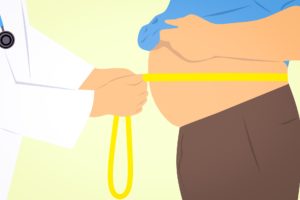First of all, if you or a loved one have been told that you have heart failure, don’t panic. Your doctor did not mean that your heart has stopped working completely and there is nothing he or you can do about it. It means that your heart is weaker and pumping with less power than normal. The pressure in your heart has increased and your heart is not pumping all the oxygen and nutrients your body needs. Your body depends on your heart to pump oxygen and nutrient-rich blood to the cells in your body. Your cells must receive proper nourishment for your body to function normally. But with heart failure, your heart is weak and it can’t supply enough oxygen and nutrients to your blood. This can make you feel tired and short of breath. Even common everyday activities like walking, climbing stairs, or carrying groceries can become very difficult. Yes, heart failure is a serious medical condition, but if you receive proper treatment and make the necessary lifestyle changes, you can live a full and satisfying life.
Even though you may feel frightened and alone, take comfort in the fact that there are approximately 5.7 million Americans just like you who have heart failure, and every year, 670,000 new cases are diagnosed. If you follow your doctor’s directions and exercise plan and change your diet, you can manage this condition.
What are the symptoms of heart failure?
We’ve already mentioned some of them, but let’s study them further. Remember, just because you have some of these symptoms, doesn’t mean you have heart failure. Share your concerns with your doctor and have him examine you and evaluate the condition of your heart.
Symptom – Racing or irregular heartbeats.
You heart is working harder and pumps faster as it tries to get more blood to your cells.
Symptom – Tiredness, weakness, confusion, dizziness, memory loss.
Because less blood is flowing to your organs and muscles, you feel tired and weak. Your body senses that it must divert blood away from your muscles and less vital organs and send more blood to your brain. But when your brain also receives less blood, the result can be dizziness or confusion. The changing levels of sodium or other substances in your blood can cause confusion.
Symptom – Shortness of breath, wheezing or a dry, hacking cough.
These symptoms may occur after exertion such as exercise, but you may experience one or more of these symptoms when you are lying flat on your bed. It may even occur while you are sleeping and cause you to wake up suddenly. Propping up your head and upper body may help you sleep better. These symptoms are caused by fluid backing up in your lungs, or lung congestion. It is because your heart isn’t able to supply enough rich blood from your lungs back to your heart so the fluid leaks into your lungs.
Symptom – Nausea.
Your digestive system is receiving less blood.
Symptom – Swollen ankles, increased urination.
Less blood to your kidneys causes fluid to build up in your tissues and because your kidneys are not able to dispose of all the sodium and water, the result is water retention or edema. You may also notice weight gain or a swelling in your legs, feet, or abdomen. This is due to the slower rate of blood flowing out of your heart causing the blood that is returning to your heart to back up, and the fluid to build in your tissues.
Many people recover from a heart attack and live full, satisfying lives.
Heart Attack
A heart attack or myocardial infarction occurs when the blood supply to the heart is suddenly reduced or cut off. It is usually caused by a blood clot that blocks an artery of the heart. Usually this happens after the artery has become clogged and narrowed by fatty deposits on its walls. (Read more about this in Cholesterol – HDL and LDL.) If these fatty deposits tear or break open, they release substances that cause the blood platelets to become sticky and thus more likely to form clots that block the artery and reduce the flow of blood to the heart.
Each year, over 1.1 million people have a heart attack. Sometimes this is the first noticeable indication of coronary artery disease. Some heart attacks are mild and go unnoticed until sometime later when routine tests are conducted. But for others, a heart attack may be fatal.
What are the symptoms of a heart attack?
Each person is different, but some common symptoms are:
Chest pain. This may spread to the back, jaw, arms or stomach; or you may feel pain in those areas, but not in your chest. One out of every three people who experience a heart attack do not feel any chest pain. You may think that your stomach pain is indigestion when it is really a symptom of a heart attack.
* Shortness of Breath.
* You may feel faint or even lose consciousness.
* Your lips, hands, or feet may take on a blue hue.
* You may become disoriented.
* You may feel anxious, restless, and feel like something bad is going to happen.
* You may perspire suddenly.
* Heavy pounding of your heart, or abnormal heart rhythms called arrhythmias. This occurs in more than 90% of the people who have had a heart attack.
* Feeling tired a few days or even a few weeks prior to the coronary event.
If you are having any of these symptoms, you need to be taken to an emergency room by an ambulance so you can begin treatment immediately. After calling the ambulance, chew an aspirin to help reduce the size of the blood clot. Upon arrival of the ambulance, trained medical personnel will examine you to see if you are experiencing a life-threatening situation. Oxygen may be administered to help reduce damage to your heart tissue. A beta-blocker may be given to slow your heart rate and reduce the damage to your heart muscle. Remember that you are in good hands. Doctors and nurses have been specially trained to take care of you. They know how to handle cardiac emergencies. But you must get to them. Time is of the essence. Some drug therapies must be given intravenously within the first six hours to be effective. After six hours, most damage is permanent. Many treatments are available for blocked or narrowed arteries. Instead of, or in addition to drug therapy, the doctor may do an angioplasty to widen the artery and cause the blood to flow through it more easily. This can be done with a balloon on the end of a catheter or a thin tube that is inserted through the groin up to the narrowed artery. Or a laser angioplasty may be done where a laser is used instead of a balloon. The laser vaporizes the plaque to reduce the blockage in the artery. Or a directional coronary atherectomy may be performed. A sharp blade inside a catheter is used by the doctor to remove part of the plaque. A stent implant may be used instead. The stent is a thin metal scaffolding that can be expanded and left in place inside the artery to keep it open. There are other techniques that are used. The doctor will decide which is best for you.
You can reduce the risk of future heart problems if you react quickly to new or worsening symptoms and make lifestyle changes to improve your health.
However, you must remember that these symptoms may mean something entirely different. You may be experiencing symptoms caused by pneumonia, indigestion, a rib fracture, spasm of the esophagus, pulmonary embolism (a blood clot in the lung), or other illnesses or diseases. It is imperative that you get examined by a doctor immediately to determine the cause of your problems and begin treatment.
Arrhythmias
Arrhythmia is an abnormal heartbeat pattern. It may be too fast, too slow, skip a beat, have extra beats or beat irregularly. This is common. More than four million Americans have arrhythmias, and most of them are not a cause to worry. You can have arrhythmia and not have heart disease. In fact, your heart may be healthy. But arrhythmia may indicate that you have a serious problem. It can result in heart disease, stroke or sudden cardiac death. A doctor’s careful monitoring of your condition is important.
What is congenital heart disease?
Congenital heart disease is a defect in one or more structures of your heart or the blood vessels near your heart that occurred prior to your birth. It is a condition that occurred while you were developing in your mother’s uterus. You were born with this condition although it may not have been diagnosed until later in childhood or even adulthood. Approximately 500,000 adults in the U.S. have congenital heart disease. There are various types of treatments that your doctor can explain to you if you have this birth defect.
What causes congenital heart disease?
For many people who suffer with this condition, we’ll never know what caused it. Others can be traced to drug abuse or taking certain medications or alcohol during pregnancy. Rubella (German measles) or other viral infections suffered by your mother during the first trimester of pregnancy have been associated with an increased chance of getting congenital heart disease. If a parent or sibling has a congenital heart defect, the risk of an unborn child having the condition is increased.
How is it diagnosed?
Your doctor may first detect an abnormal heart sound or murmur when he listens to your heart. Further testing can be done such as: an EKG (electrocardiogram), a chest X-ray, an MRI, an echocardiogram or transesophageal echocardiogram, or cardiac catheterization.
Can it be fixed?
Over the last few decades, there have been major advances in diagnosis and surgery that have made it possible to repair most defects. About 650,000 to 1.3 million Americans with cardiovascular defects are alive today. The condition may be diagnosed before birth, right after birth, during childhood, or later in life. Many people with these defects are now living longer and leading full, active lives.
Consult with your doctor to learn more about your specific heart defect and the treatment that can help you. Some mild cases do not need any treatment at all. Others may be treated with medications, surgery or other procedures. Your doctor should monitor your heart so precautions can be taken to ensure your long-term health. Actively taking part in your health care and continually making healthy choices with your doctor’s guidance can help lower your risk of future heart problems. Reporting new or worsening symptoms to your doctor can also help alleviate future problems.
More heart diseases.
Research is ongoing, but at least 35 heart defects have now been identified. We’ve discussed congenital heart disease and we know that it is a defect that occurred in the heart or blood vessels prior to birth. Some defects in this category are patent ductus arteriosis, atrial septal defects and ventricular septal defects.
There is another type of heart disease in children known as “acquired heart disease.” It is a disease that develops during childhood. Examples of acquired heart disease are: rheumatic fever, infective endocarditis and Kawasaki disease (this disease usually occurs in children who are five years of age or younger; knowledge of this disease is still being developed in the medical field).
Each year, approximately 36,000 children are born with a heart defect. Out of every 1,000 infants born each year, nine have a heart defect. Many children can benefit from surgery even if the defect is severe. It should be noted that in most cases there is nothing that the parents could have done to prevent these defects. A possible exception would be the mothers who had a drug or alcohol problem during pregnancy.





